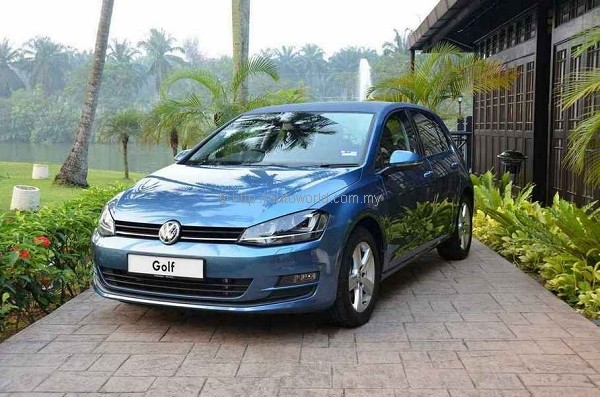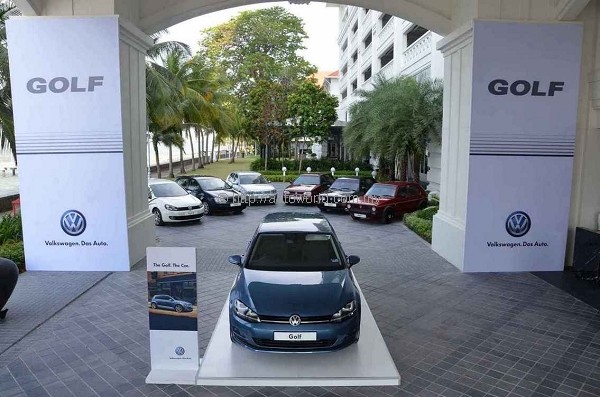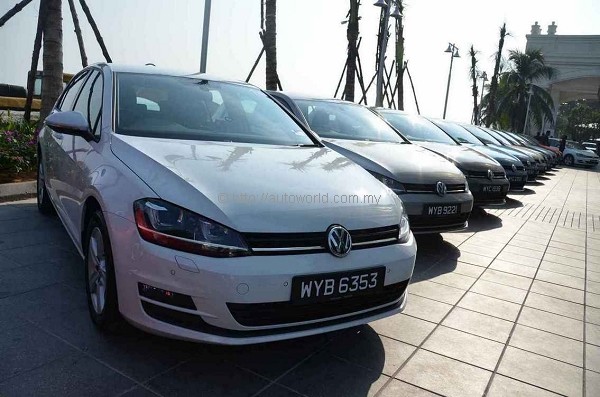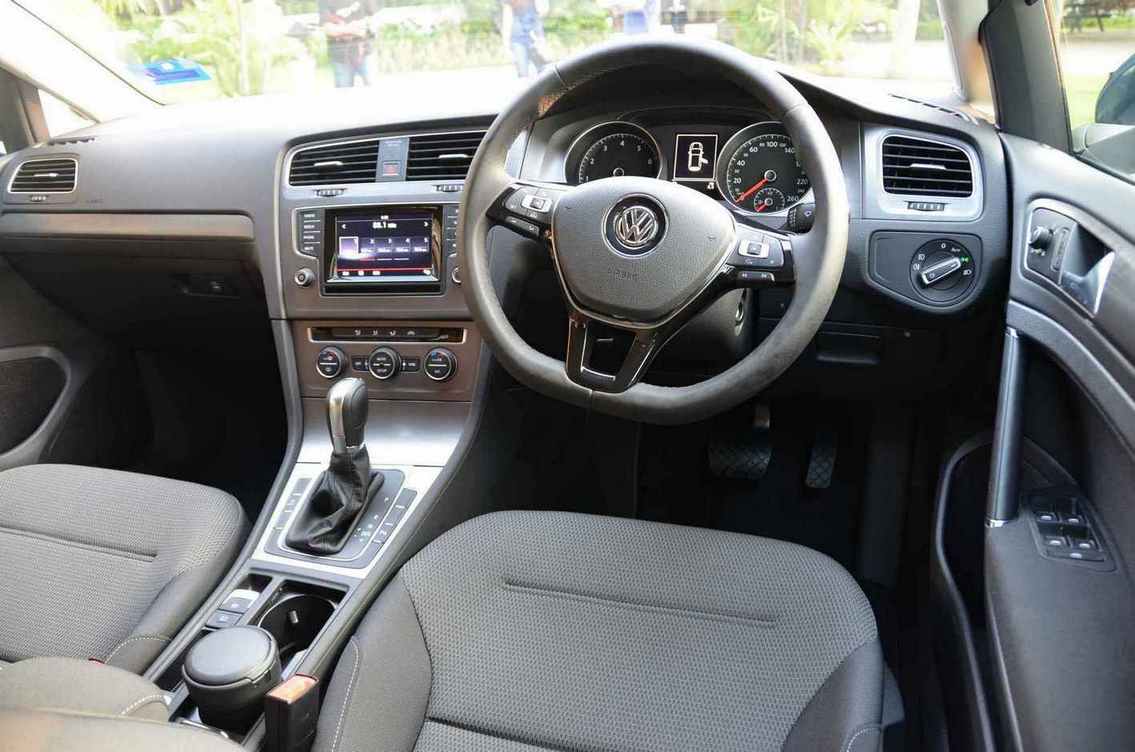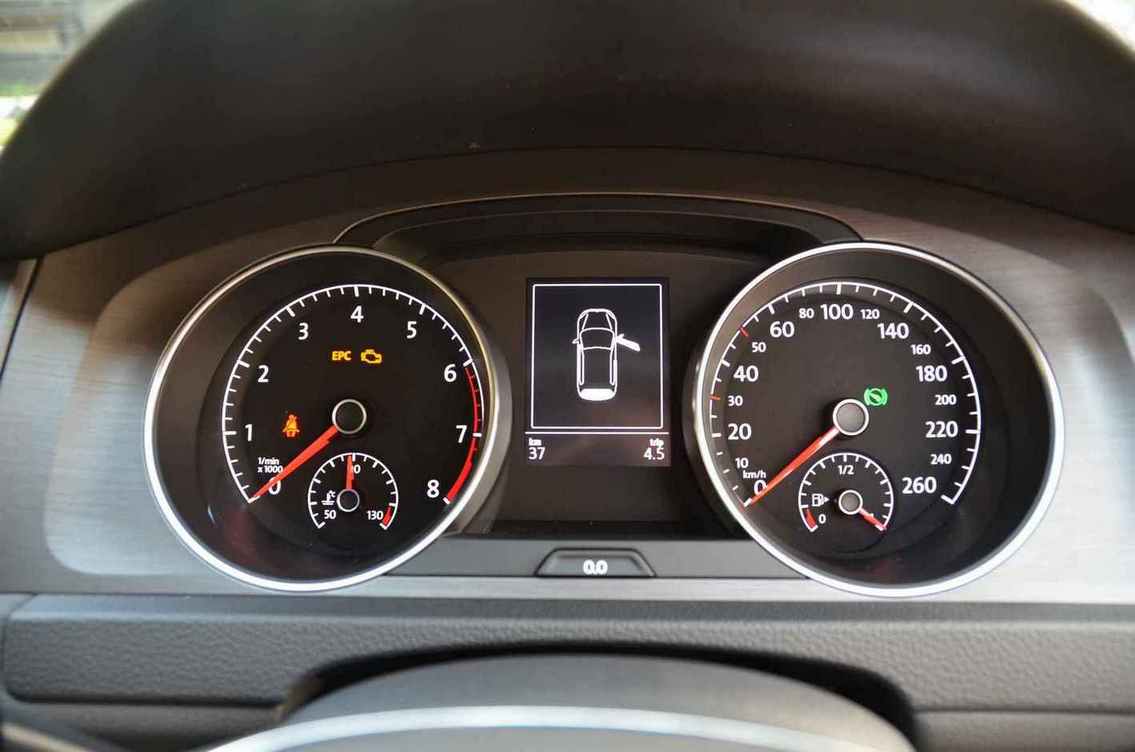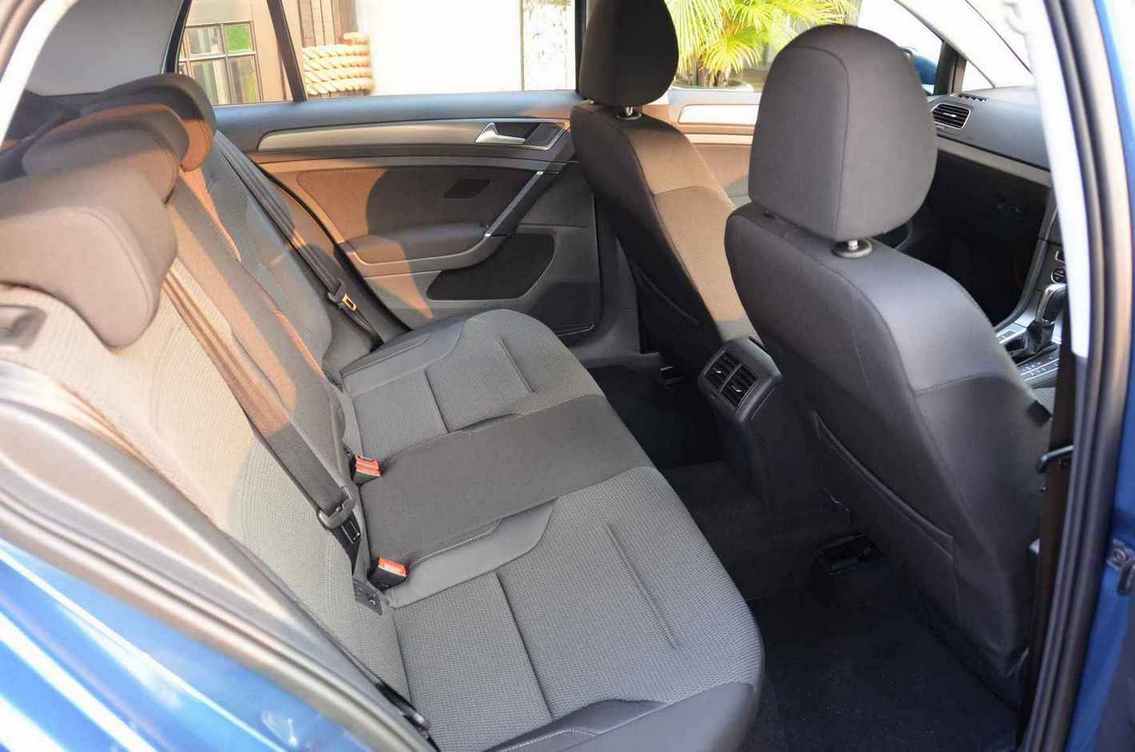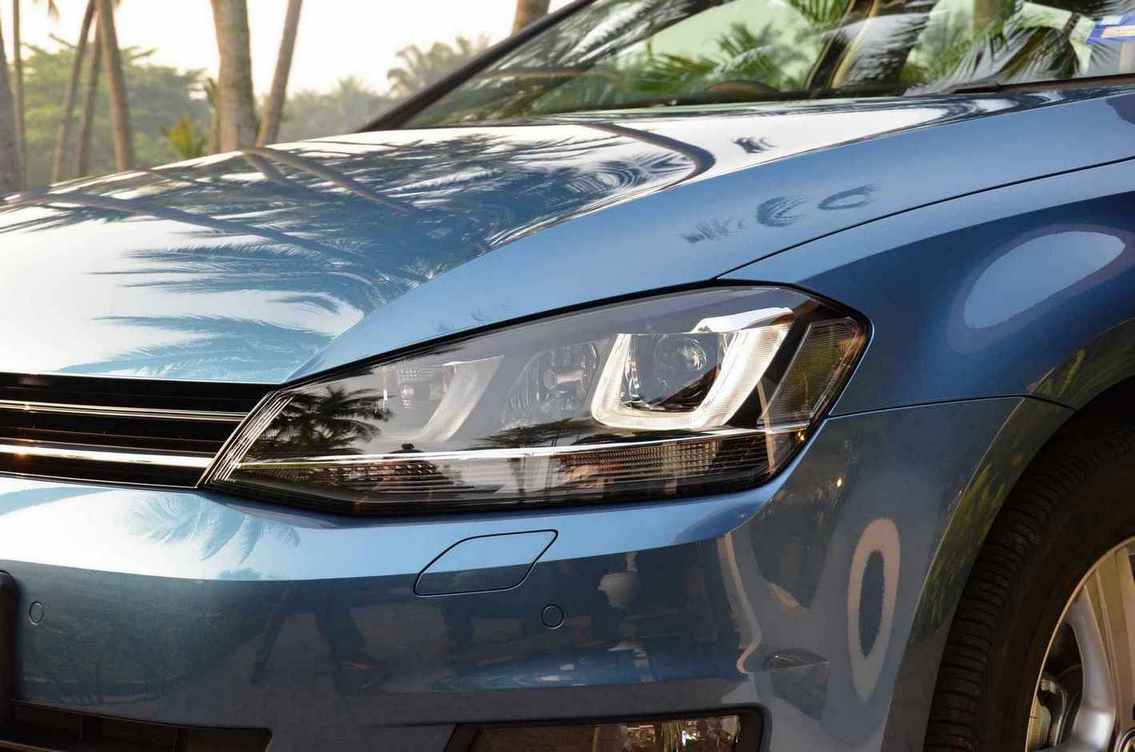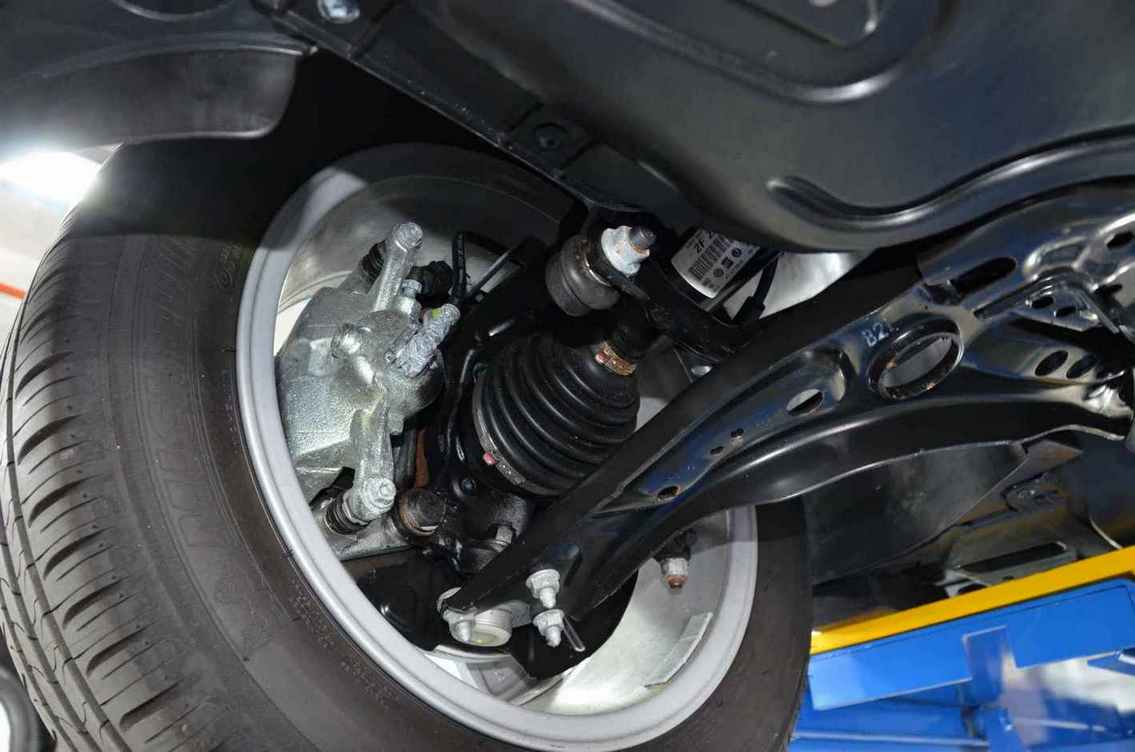New VW Golf 7 TSI 2013 – Driving Impressions
There is a Golf 6 TSI that sometimes sits in the yard, when my daughter is not at work, and many times I have ‘borrowed’ it for a couple of hours, or even a day or two. It is a great car to drive, has loads of power, hence a light throttle that responds instantaneously to my demand anytime, anywhere. Powered by the twin-charged 1.4 litre TSi engine, there is nothing in its class that comes anywhere near. My normal car is a Mercedes C200, which is nice and comfortable, and with a 1.8 litre super-charged engine, I get 180 horses on tap – however, the car is heavier than the Golf TSI, and so acceleration is a little slower. In terms of driving, the Golf 6 is more fun, and definitely more agile – what the C200 has is size and composure. Having said that, the Golf 6 is extremely stable at high speeds, and you can cruise along the highway at 180 (when it is safe to do so), and feel very secure.
In comes the Golf 7, launched just a few days ago, and the TSI model comes with a new 1.4 litre engine, turbo-charged, but minus the supercharger. Power is rated at 140PS, but maximum torque is increased by 10 Nm to 250Nm. My colleague has test driven the car in Europe a couple of months ago, and another friend of mine did too. Both of them are raving about the car, but I still had my doubts when I first stepped into the Golf 7 TSI a few days ago for the Golf 7 media drive from Kuala Lumpur to Penang.
There were 20 cars available, and there were 39 of us media. Paired two to a car, there obviously had to be an odd man out – I volunteered, on the grounds that it would be tiring for one person to drive all the way to Penang alone, and thankfully, the convoy leader agreed. So it was just me and the new Golf 7 all to myself for the 232 kilometres from KL to Ipoh, which included two sections of detours into the B roads, and the more direct 162 kilometres from Ipoh to Penang.
Physically, the Golf 7 looks very much like the Golf 6 – the true Golf fan would be able to spot the differences immediately, but the man-on-the-street may have to see both cars side by side in order to know they are not exactly the same. In actuality, the new Golf is on a completely new platform, and follows the Volkswagen MQB platform design, which is another short story in itself. Suffice to say that there is no single panel in the Golf 6 that fits into the Golf 7.
The new Golf 7 is slightly shorter, due to reduced overhang at the front and rear, but the wheelbase (distance between the front and rear wheels) has been extended. Thus, interior room has actually been increased, also due to the fact that the new Golf is also slightly wider. It is plus or minus a little here and there, and in a nutshell, it is lower, wider, and a little shorter. The lights, bonnet, boot and other panels are changed, but the overall silhouette remains as a traditional 2-box hatch shape.
Inside, there are upgrades for connectivity, including a 5.8 -inch screen for driver-car interface, a USB port and jacks for audio device input. Auto Stop and energy regenerative braking bring the Golf up to speed with automotive trends – this explains the ‘Blue Motion’ badge at the rear of the car. Fuel consumption is mooted at 5.0 litres per 100 kilometres in mixed driving, and CO2 emission is 116 g/km. The rear seats fold down for additional space, and the boot area is maximised through the use of a space saver – something I really appreciate as I am not one of those who like run-flat tyres, and neither do I like tyre repair kits. (The last time I had a blow-out I was in a car with run-flats, and I was 130 kilometres away from civilization – it is no fun trying to nurse the car at 80 kph for that distance, and by the time I got back, the tyres were almost shredded).
Getting into the new Golf, I felt immediately at home, because Volkswagen always makes their car controls very similar. The familiar paddle shifters are right where they are supposed to be, and the ignition key slot is in exactly the same place. The parking brake is now electronic – something I think is totally unnecessary as I prefer the conventional mechanical parking brake – I suppose one cannot fight progress. There is also an “Auto Hold’ button – this automatically puts the brakes on every time you come to a stop, to keep your car from rolling either forwards or backwards, and releases it again when you accelerate again. This is a feature my wife would appreciate, but I never used it at all during the entire drive. The driving aids such as Traction Control and ESP and an electronic differential help to keep the Golf 7 on the road, and should you have an unscheduled adventure, there are seven airbags for protection. The new Golf 7 scores a 5 star for NCAP rating on crash tests.
The new Golf 7 has been named the European Car of The Year 2013 – an honour that is really respectable, and I now had to chance to see what makes it tick.
Driving it for the first time, it felt very much like my old Golf 6, with a few noticeable differences. With the supercharger in place, the old Golf 6 has some issues in stop-start traffic – the throttle response tends to be abrupt, especially if you are not used to the car, and sometimes it lunges forward on initial throttle. With the new Golf, the take-off is much smoother, albeit slightly slower. Unless you do a lot of jack-rabbit sprints, the new system is actually more user-friendly.
Acceleration through the 7-speed DSG is smooth – I drove two different units during the test drive, and found the first one to be a little sluggish – on the way back, the unit I drove was considerably faster – after checking the odometer and asking around, I gleaned the cars were not run in, being fresh from the box just a couple of days before the launch and the media drive. After the 400 kilometres to Penang on the way up, the engines had all become smoother. In terms of acceleration on the way back, I had no issues with the car, and although the mooted power is 20 PS lower, the new Gold has no problems passing the 200 kph mark. The highest I managed was a little over 215 kph for a short while when the road was clear. Otherwise, cruising at between 160 kph to 180 kph was effortless.
How does the new Golf handle? There was one particular stretch between Behrang and Ulu Slim that I really liked during the drive. Twenty seven kilometres of beautiful ‘B’ roads with sharp bends and lots of twisty sections provided some twenty minutes of me being as one with the new Golf 7. If you compare it to the old Golf 6, which already drives like it was on rails, the new one is marginally better, so you can say it does handle better. What I like about the new Golf is its composure as you enter any bend. Although it runs on 16-inch tyres (same as the old Golf), it can take any punishment that you can dish out. I have changed the wheels on my Golf 6 to 17-inch, which has improved its handling a little, but even on the 16’s, the new Golf 7 is just as good, if not better. The key here really is the sense of security that you as a driver would have as the Golf 7 turns in confidently, and you know that it will make it through without any fuss. In passing I thought it might be useful to know that the new Golf is close to 100 kilograms lighter, which contributes to handling, and fuel consumption of course. Also, the new engine is tilted backwards, putting the weight more towards the centre of the car, and overall balance has been changed for the better. Besides, the shorter overhang means the four wheels are even closer to the respective corners of the car, adding to stability. Despite my hard driving and hard cornering, not once did I activate the traction control system – perhaps I was not going fast enough?
In terms of ride comfort, the Golf 7 is exceptional. The interior is quiet, save for a little bit of wind noise when you go above 170 kph – not a point to worry about if you normally drive at safe speeds. The car feels very planted, and you will get a very relaxed kind of feeling despite high speeds due to the excellent composure. It is hard to describe, but you just feel very safe and secure.
Some of the die-hard loyalists of mechanical power steering systems were actually quite amazed at how ‘true’ the electric power steering in the Golf was. The fact of the matter is, the chassis tuning is so refined, and the programming of the system so good that you would never know that the steering system was electric powered. In a nutshell, the steering was always spot on, turn in was good, and the body remained stable and composed all the time.
Fuel consumption sometimes will swing a purchase decision one way or the other – in the case of the new Golf 7, the Blue Motion technologies actually has made it more frugal on fuel. The technology in full actually has cylinder shut-off (i.e. some of the engine cylinders are shut down so no fuel is wasted during light throttle cruising), but the Malaysian model does not have it. Nevertheless, the Blue motion includes accurate metering and injection of fuel to improve efficiency, and also shutting off the fuel feed when on ‘negative’ throttle (as in when your foot is off the accelerator). Volkswagen is the leader in the automotive industry for ‘down-sizing’ of engines (without loss of performance), and the 1.4 litre TSI engine, whilst delivering the power of a 2.0 litre conventional engine, and huge amounts of torque, is economical on fuel. I really do not know how much of the Blue Motion stuff came into play during my drive back, what with the consistently high cruising speeds I was maintaining, but with a full tank in Juru just before the toll plaza, I got back with more than half a tank of petrol left in the Golf 7. Even I was amazed.
All things said and done, let us see who should buy the new Golf TSI? If you have a small family, and like to drive fast, but are conscious of fuel consumption, you will enjoy the Golf TSI. If you want out and out power, and like to blow everybody else away, wait for the GTI, which should be here in a couple of months. If you just like to drive, and can afford RM157,888.00, the Golf TSI is for you. I would like to give you a warning though – do not go and test drive the Golf TSI, because once you do, you will want it. Finally, once you get one, you will have a tough time finding the next car to replace it.




